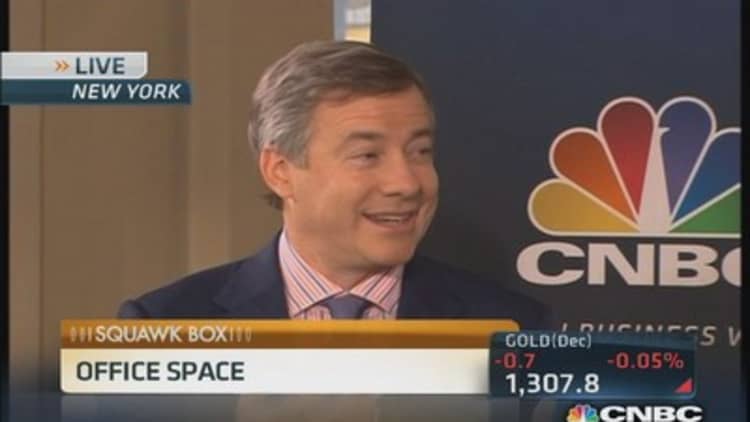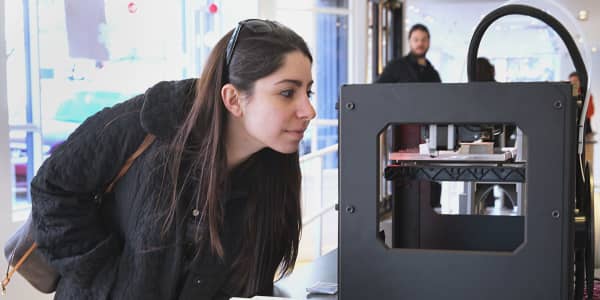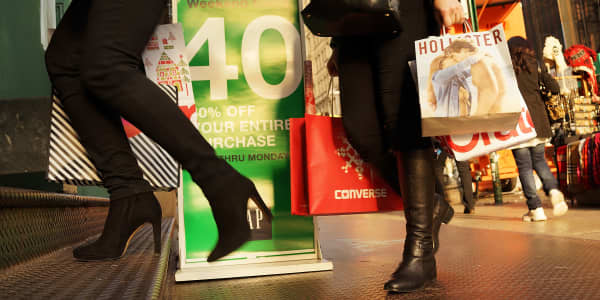During the Great Recession, shoppers could stroll down just about any major city block and find one, or two, trendy storefront pop-up stores. But those days are long gone. With less vacant commercial retail space available this holiday season, pop-up shops—temporary retail stores—are evolving and finding new outlets.
The vacancy decline in fact is a sign of a stabilizing economy, said Chuck Lanyard, a retail analyst for the Goldstein Group, a real estate brokerage firm.
"Retailers are feeling better about the economy. ... They are not as reluctant to open stores and they are leasing up," Lanyard said. "Landlords want long-term tenants, and shoppers want to be able to go back to the same stores and know that they are there."
(Read more: Nothing in-between? The wealth gap alters retail)
Vacancy rates at U.S. regional malls and local shopping centers fell to their lowest since 2009 during the second quarter and third quarter, according to real estate research firm Reis. Lanyard expects the growth of pop-ups to slow as retail occupancies rise.
"I don't view less real estate as a decline in overall pop-ups," said Christina Norsig, chief executive of PopUpInsider, an online exchange for temporary real estate. The pop-up concept has matured with the improving retail market, she added, and more business owners are embracing the store-within-a-store concept.
Some merchants prefer pop-ups because they can swoop into a physical space, set up shop quickly and take advantage of existing foot traffic.
"There is a need for quick merchandising," Norsig said. Plus, she said, "not every product is ready, or able, to stand on its own."
(Read more: Christmas shoppers, just wait—big toy deals coming)
New York-based men's store Rothmans incorporated a "permanent pop-up store" into its business model. Co-owner Jim Giddon said featuring a different pop-up every three months or so within their larger space has helped his store reach new customers.
"It works out great because they [the pop-up retailer] get a chance to test out the market, without making a large financial investment, and we get to supplement our inventory by offering items we don't normally carry," Giddon said. "We end up grabbing a customer that may not have walked in normally."
The store-within-a-store evolution makes sense because there's less space for pop-ups anywhere else, said Cedrik Lachance, senior analyst at Green Street Advisors, which provides real estate research for investors.

He noted that holiday pop-ups in particular were once able to return to the same vacant space multiple times, but he says those days are long gone.
"In general, better-quality spaces are very well leased," Lachance said. "Bifurcation has taken place and the only space that might be available is a low-quality spot with very little foot traffic."
Norsig of PopUpInsider said the drop in vacant retail space has helped the pop-up concept evolve beyond a seasonal, holiday trend.
"We don't see as much seasonal interest as we did in the past," Norsig said. "I can't think of one Christmas pop-up that we have worked on. Most of our clients are looking to test-market and improve their brand."
However, there are still people who have faith in the stand-alone pop-up stores.
In an effort to boosts its retail presence, Google recently opened six winter-themed pop-ups in six major U.S. cites. The retail spaces feature tech devices.
Meanwhile, some small-business owners are still turning to stand-alone pop-up stores.
Olivia Fabian, co-owner of OFabz Swimwear, said setting up pop-up shops helps her promote her online store. "Customers get to try on the products, and their feedback helps us with branding," she said.
Fabian is co-organizing a holiday pop-up event—"Hollypop"—with other Web-based small-business owners in Fort Wayne, Ind. where the retail vacancy rate is 15.5 percent, higher than the national average of 10.5 percent, according to Reis.
Fabian said the event is less about the holiday season and more about promoting merchants' goods—crochet hats, domestic olive oil, baked goods and color-changing nail polish—all "Made in the USA." "We knew that a lot of people who wouldn't normally be in the downtown area would be there for the holiday festivities," she said.
"A lot of us are just starting out, so it's helpful to have a support system of loyal customers and local business owners," Fabian said. "We expect to have about 18 vendors. ... It's like a pop-up mini-mall, but everything is locally made."
(Read more: Google showrooms to push holiday sales)
"Most of our community had never heard of a pop-up when we introduced 'Hollypop' last year and now they're asking for it because they discovered so many new products last time," Fabian said.
—By CNBC's Karma Allen. Follow him on Twitter @iam_karma





